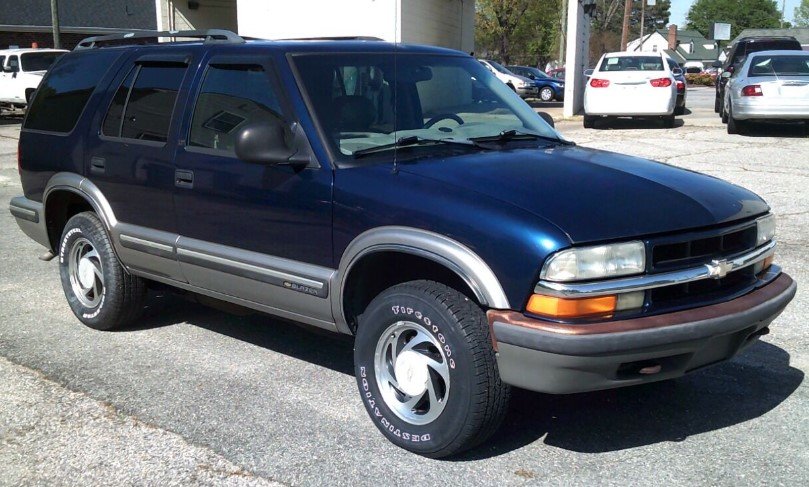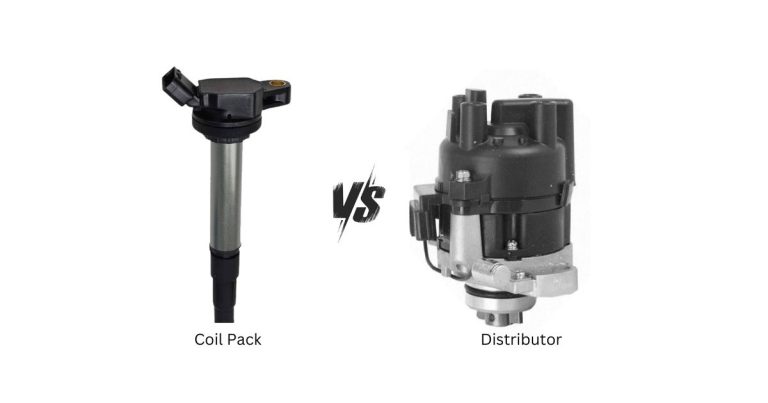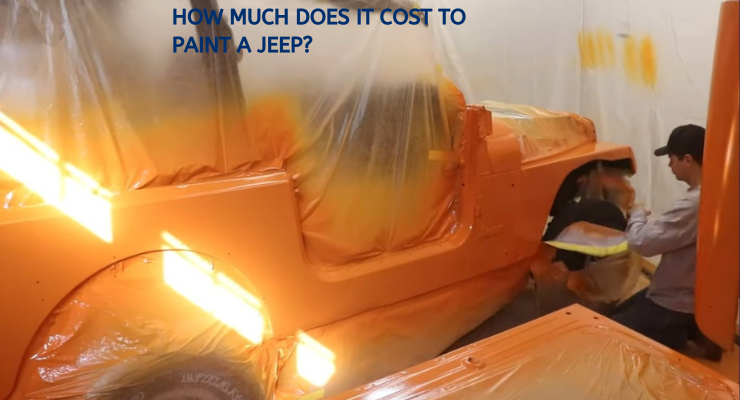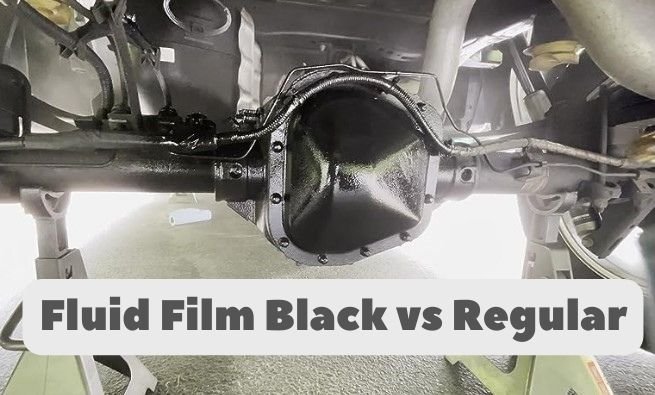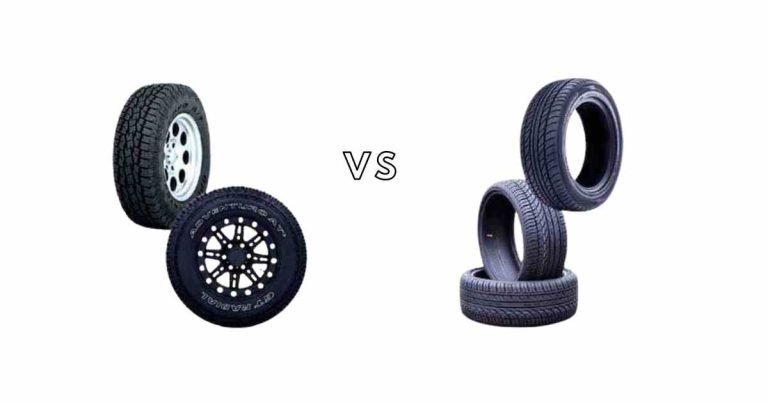A Closer Look At 1998 Chevy Blazer Problems: Troubleshooting Guide
Powered by a 4.3L six-cylinder engine, the 1998 Chevy Blazer is a reliable and robust truck of its time. However, this Blazer has had its fair share of reported issues that affects its performance and reliability. Now you might wonder, what are these 1998 Chevy Blazer problems?
The common issues with the 1998 Chevy Blazer range from starting to stalling problems, electrical faults, and transmission troubles. Heating problems, faulty fuel pumps, and coolant leaking are also typical. You may also encounter problems with the windshield wiper, suspension, distributor, and brakes.
So then, how do you fix these problems? In this guide, we will discuss all the possible solutions available for each issue.
Common 1998 Chevy Blazer Problems and Their Solutions Table
Before we dive into the main guide, here is a summary of the 1998 Chevy Blazer issues and how to fix them.
| 1998 Chevy Blazer Problems | How To Fix |
| Starting Issues | Add more gas. |
| Replace the fuel pressure regulator. | |
| Change the crankshaft position sensor. | |
| Jumpstart the battery or install a new one. | |
| Replace the fuel pump relay. | |
| Clean the starter terminals. | |
| Stalling or Power Loss Issues | Tighten, clean, or replace ground wires and straps. |
| Tighten the wiring connection to the ignition coil. | |
| Clean the battery terminals. | |
| Seal the leaks on the intake manifold. | |
| Replace the throttle position sensor. | |
| Electrical Problems | Replace any damaged ground wires, clean the corrosion, and tighten them. |
| Change the battery. | |
| Replace the ignition switch. | |
| Transmission Failure | Replace the torque converter. |
| Perform a transmission fluid flash. | |
| Replace the damaged transmission shift solenoid and wiring. | |
| Heating Issues | Flush the heater core and hoses. |
| Replace the blend door actuator. | |
| Replace the thermostat and its hoses. | |
| Install new vacuum lines. | |
| Distributor Problems | Overhaul or replace the component. |
| Poor Gas Mileage | Perform engine tune-up. |
| Faulty Windshield Wipers | Replace the circuit board or solder the cracked solder joints. |
| Fuel Pump Failure | Install a new fuel pump. |
| Replace the fuel pump relay. | |
| Leaking Coolant | Seal any cracks in the intake manifold gasket. |
| Replace the intake manifold gasket. | |
| Install a new water pump. | |
| Brake Failure | Replace the broken brake pipe. |
| Change the ABS control module. | |
| Replace the ABS sensor and hub assembly. | |
| Flush the brake fluid. | |
| Rebuild or replace the brake master cylinder. | |
| Suspension System Issues | Retighten the nuts and replace the lower control arm. |
| Install new ball joints. | |
| Repair the air compressor. |
What Are the Known 1998 Chevy Blazer Problems?
Every vehicle has problems regardless of the year, model, or make. Below we will discuss the common issues with the 1998 Chevy Blazer.
- Starting Issues
Over time, the 1998 Chevy Blazer with a 4.3L Vortec engine may fail to start without giving any warnings. This problem only disappears briefly after changing the fuel pump, fuel filter, and gas tank.
In some cases, the truck only starts when you put gas in the throttle body. But as soon as all the fuel is used up, it won’t start. In some vehicles, the Chevy Blazer may crank while sputtering like it is running out of gas but fails to start.
Now, besides a bad crankshaft position sensor, the cause of the starting issues could be low fuel pressure. It could also be a loose connection on the starter solenoid or relay, a dead battery, and a bad fuel pump relay.
How To Fix
Depending on the cause of your 1998 Chevy Blazer problems starting, several solutions are available. These include:
Step 1: Check if your truck has gas and refuel it.
Step 2: Get a pressure gauge and check the fuel pressure at the relief valve. It should be between 62 and 65 PSI for the engine to start. If low, replace the fuel pressure regulator.
Step 3: Check for voltage at the terminals of the crankshaft position sensor using a multimeter. If there is no voltage, replace the sensor.
Step 4: Tighten the wires that join to the starter and clean any corrosion you see on the starter terminal.
Step 5: Use a multimeter to check the voltage of your battery. If the voltage is below 12.6 volts, the battery is dead, but you can jump-start it. However, if it’s old, you must get a new battery.
Step 6: Check the voltage of the fuel pump relay. If the reading is greater than zero ohms, replace the relay.
- Stalling or Power Loss Problems
The 1998 Chevy Blazer is notorious for stalling when coming to a stop with no check engine light illuminating. Sometimes, you could be driving at speeds of 60 mph, and it goes to zero mph suddenly.
Typically, there are many possible causes of the 1998 Chevy Blazer stalling, including a ground issue and a bad connection to the ignition coil. Bad battery connections, a leak in the intake manifold, or a faulty throttle position sensor can also cause stalling.
How To Fix
Here are some possible solutions to stalling or power loss problems on your 1998 Chevy Blazer. Also, check 2011-chevy-equinox-problems.
Step 1: Find and check all the ground wires and straps to see if they are loose, dirty, or damaged. Then, tighten the connection, clean the dirt, and replace the damaged ones.
Step 2: Check the wiring connection to the ignition coil by wiggling the wires while the engine is on. If it stalls, tighten the connection.
Step 3: Inspect the battery connections and clean the terminals.
Step 4: Check the intake manifold for cracks and seal the leak with silicone or epoxy sealer.
Step 5: Check the voltage of the throttle position sensor. If it does not reach 5 volts, replace it.
- Electrical Issues
The electrical issues range from all the lights staying on when the vehicle is off to the flasher unit clicking erratically. However, once you press the brake pedal, the flasher stops clicking briefly.
Other electrical issues include intermittent wiper problems and the electrical contacts in the ignition switch failing. Generally, the primary cause of these problems is lousy ground, faulty battery, or defective ignition switch.
How To Fix
The solution to these electrical issues involves repairing and replacing the damaged components. Here is how to go about it.
Step 1: Use a multimeter to check the engine and chassis grounds. If you get a voltage drop higher than 0.2 volts, check for corrosion, loose, or broken wires. Then, replace the broken cables, clean the rust, and tighten the slack connections.
Step 2: Check the voltage of the battery. If it is not 12.6 volts when fully charged and the engine off, recharge it. When the engine is running, the voltage should be between 13.5 and 14.5 volts. If the battery is old, you should replace it.
Step 3: Measure your battery’s voltage with the key at the run position on your ignition switch. If the reading is far from the battery voltage of 12.6, replace the ignition switch.
- Transmission Failure
The 1998 Blazer transmission may shift well in 1st and 2nd gear but slip in the 3rd gear, especially when slowing down. In some vehicles, the transmission may lose power when you put it in the drive. It may also fail to downshift when you stop the car or may slip into overdrive.
Now, apart from a faulty torque converter, other causes of transmission failure are dirty transmission fluid and a bad transmission shift solenoid.
How To Fix
Below is a list of steps for fixing the most common transmission failures in a 1998 Blazer.
Step 1: Start the engine. Then, press the brake pedal with one foot and the accelerator with the other for up to 5 seconds. If the RPM reading is lower or unusually higher than your engine and torque converter specifications, replace the torque converter.
Step 2: Inspect the condition of the transmission fluid and perform a transmission flush if it is dirty.
Step 3: Check the transmission shift solenoid and wiring for any damage and replace it.
- Heating Problems
Sometimes, the 1998 Chevy Blazer may blow only hot or cold air into the cabin. Rarely, you may not get any heat out of the heater despite the AC and fan working fine. However, sometimes the heater fan and AC may quit working entirely.
In most cases, a clogged heater core, including the hoses, is the cause of the heating problems. But sometimes, heating problems may occur due to a faulty blend door actuator, a bad thermostat, or broken vacuum lines.
How To Fix
You can fix most heating problems in 1998 Blazer by implementing the following:
Step 1: Check the heater core and hoses for any blockage. Then, flush it with water or an air compressor to remove all the clogs.
Step 2: Disassemble the dashboard to access the blend door actuator and manually move it. If it does not move properly, replace it.
Step 3: Remove the radiator cap and allow the engine to idle. If you see the coolant flowing right away, the thermostat is stuck open. Therefore, you must replace the valves in the thermostat hoses and the thermostat.
Step 4: Visually inspect the vacuum lines and replace any broken hoses.
- Distributor Problems
The distributor may develop internal faults like damaged springs and worn-out rotor, leading to stalling or a rough running engine. In this case, the Check engine light may or not illuminate. Besides the 1998 Blazer, this problem affects other Chevy Blazer years from 1990 to 2005.
How to Fix
The best solution is to either overhaul the distributor or replace it. Overhauling the distributor involves inspecting its individual components, including the cap and rotor for wear or damage. Then, repairing or replacing the worn-out parts.
- Poor Gas Mileage
The 1998 Chevy Blazer is not the most fuel-efficient truck. It consumes around 14 MPG in the city and 19 mpg on the highway. Conversely, the combined average MPG across all models is 16 miles per gallon.
Over time, the gas mileage may reduce to 14 mpg or less on the highway. According to several users, the truck drains the fuel tank in no time at speeds of 70 mph.
How To Fix
Generally, routine engine tune-ups may help improve your Blazer’s fuel economy. Tune-ups include:
- Installation of new spark plugs and plug wires
- Replacing the air and fuel filter
- Cleaning the fuel injectors, throttle body, and throttle plate
- Checking and replacing coolant hoses and fuel lines if necessary
- Diagnosing and replacing bad distributor caps
- Windshield Wipers Failing
The windshield wipers may work sometimes and then stop working. In some cases, they will only run at full speed. And once you turn off the high-speed setting, they stop right halfway.
Generally, this problem occurs due to a faulty wiper motor circuit board or cracked solder joints.
How to Fix
Depending on the damage to the circuit board, you can repair or replace it. To repair the board:
Step 1: Disconnect the circuit board from the wiper motor.
Step 2: Heat the cracked solder joints to reflow the solder. Alternatively, you can add more solder to repair and make the joints stronger.
Step 3: Reassemble the circuit board into the wiper motor assembly.
- Fuel Pump Failure
The 1998 Blazer is susceptible to fuel pump failure, such that when you turn the key, the pump does not hum. And when this happens, the Blazer may stall or fail to restart.
Even worse, the fuel pump failure may cause erratic fuel gauge operation. Besides a defective fuel level sensor, a blown fuel pump relay or a clogged fuel filter could also cause fuel pump failure.
How to Fix
Apart from replacing the fuel filter every 30,000 miles to prevent fuel pump failure, check out these tips on how to fix the problem.
Step 1: Use a pressure gauge to check the fuel pressure. If it reads zero, you must replace the fuel pump.
Step 2: Swap the fuel pump relay temporarily with another good relay from the power distribution box. If the pump powers on, replace the relay.
- Leaking Coolant
Coolant leaks are very typical in the 1998 Chevy Blazer. The leaks mainly occur from the lower intake manifold gasket. In this case, you are likely to notice the leak underneath the AC compressor.
The coolant leak may also come from the water pump, causing the engine to overheat. Even worse, the truck may occasionally leak the coolant as soon as you refill it.
How To Fix
Below are possible solutions for coolant leaks in your 1998 Chevy Blazer.
Step 1: If the leak on the lower intake manifold gasket is small, you can seal it.
Step 2: For significant leaks, the solution is to replace the gasket. Just don’t install OEM gaskets, as they are not long-lasting. Instead, use factory intake manifold gaskets.
Step 3: If the coolant leaks from the water pump, replace the O-ring and install a new pump.
- Brake Problems
One of the typical brake problems is the Anti-lock brake system control unit failing internally. When this happens, the ABS warning light may illuminate.
Occasionally, the brakes may act like they are shuddering, or the ABS is kicking in. This occurs when you apply the brakes at very low speeds.
In addition, the rear axle brake pipe may break over time, causing a slow brake fluid leak. Consequently, this may lead to a soft brake pedal feel, the instrument panel brake light illuminating, and loss of rear brake performance.
Typically, a bad master cylinder is responsible for most brake problems. Sometimes, the cause of these issues may also be dirty brake fluid or a faulty ABS sensor.
How To Fix
Apart from bleeding the ABS unit, other ways to fix 1998 Blazer brake issues, include the following:
Step 1: Inspect the brake pipe and replace it if broken.
Step 2: Replace the ABS control module.
Step 3: Inspect the hub assembly in the ABS sensor area for dirt and corrosion. Then, clean it or replace both the hub assembly and ABS sensor.
Step 4: Check the condition of the brake fluid. If dirty, flush it right away.
Step 5: Inspect the brake master cylinder for leaks around the seals. Then, rebuild or replace it with a new one.
- Suspension System Issues
The attaching nuts of the lower control arm may come under torqued in your 1998 Blazer. When this happens, the attachment bolt may loosen or even break, causing the front control arm to separate from the frame.
In addition, the ball joints tend to wear very fast. Some users say they have had to replace these joints every 6 months. Another issue with the suspension system is that the rear may sit low due to a failing air compressor. This problem is frequent in 1998 Blazers with rear air springs.
How To Fix
You can fix this problem by retightening the nuts that secure the lower control arm to the correct torque specification. Other solutions include:
Step 1: Replace the lower control arm if the attachment bolt is broken.
Step 2: Installing new ball joints.
Step 3: Replacing the damaged parts of the air compressor, such as the motor and O-rings.
FAQs
In this section, we will respond to frequently asked queries regarding the 1998 Chevy Blazer’s reliability and problems.
What is the lifespan of the 1998 Chevy Blazer?
If you keep up with proper maintenance, your 1998 Blazer could last between 200,000 and 220,000 miles. This may include changing the oil and oil filter at least every 7,500 miles.
Is the 1998 Chevy Blazer reliable?
Yes. The 1998 Chevy Blazer is a reliable car for its age and will get you wherever you need to. Its reliability is because the truck is powered by a robust 4.3L V6 engine capable of producing up to 190 horsepower.
Why does the 1998 Chevy Blazer hesitate during accelerations?
The primary cause of this problem is dirty fuel injectors. When the injectors are clogged with dirt, they cannot provide adequate fuel to the cylinder, causing the engine to run lean. This, in turn, causes hesitation when accelerating.
Are there any 1998 Chevy Blazer recalls?
Yes. There were at least 3 recalls issued for this truck. These recalls mainly focused on issues like suspension failure, brake problems, and faulty exterior lighting.
Conclusion
Over the years, the 1998 Chevy Blazer has had its share of reported problems. The most common ones have been difficulty starting, stalling, transmission failure, electrical problems, and heating issues. Other 1998 Chevy Blazer problems forum, include poor gas mileage, a faulty distributor, brake issues, and coolant leaking.
Typically, most of these problems occur in vehicles with higher mileage and not well-maintained. Nothing to worry about though, as most of these issues are easy and inexpensive to fix, especially if you are mechanically inclined. Better yet, you can avoid most problems by paying close attention to regular maintenance and using factory-specified repair parts.

